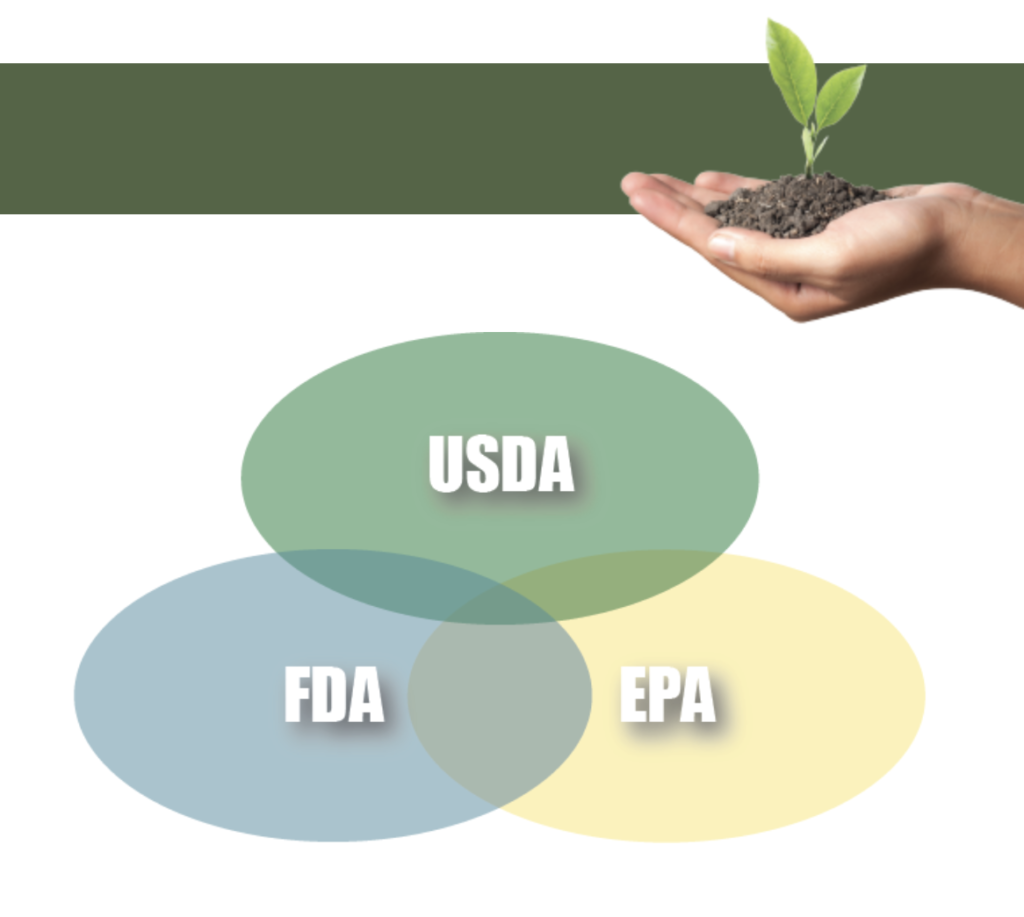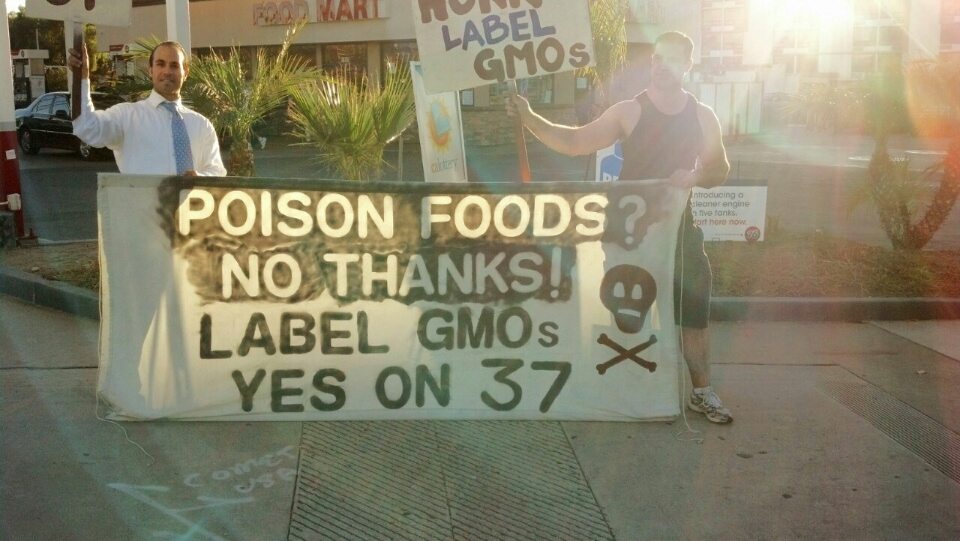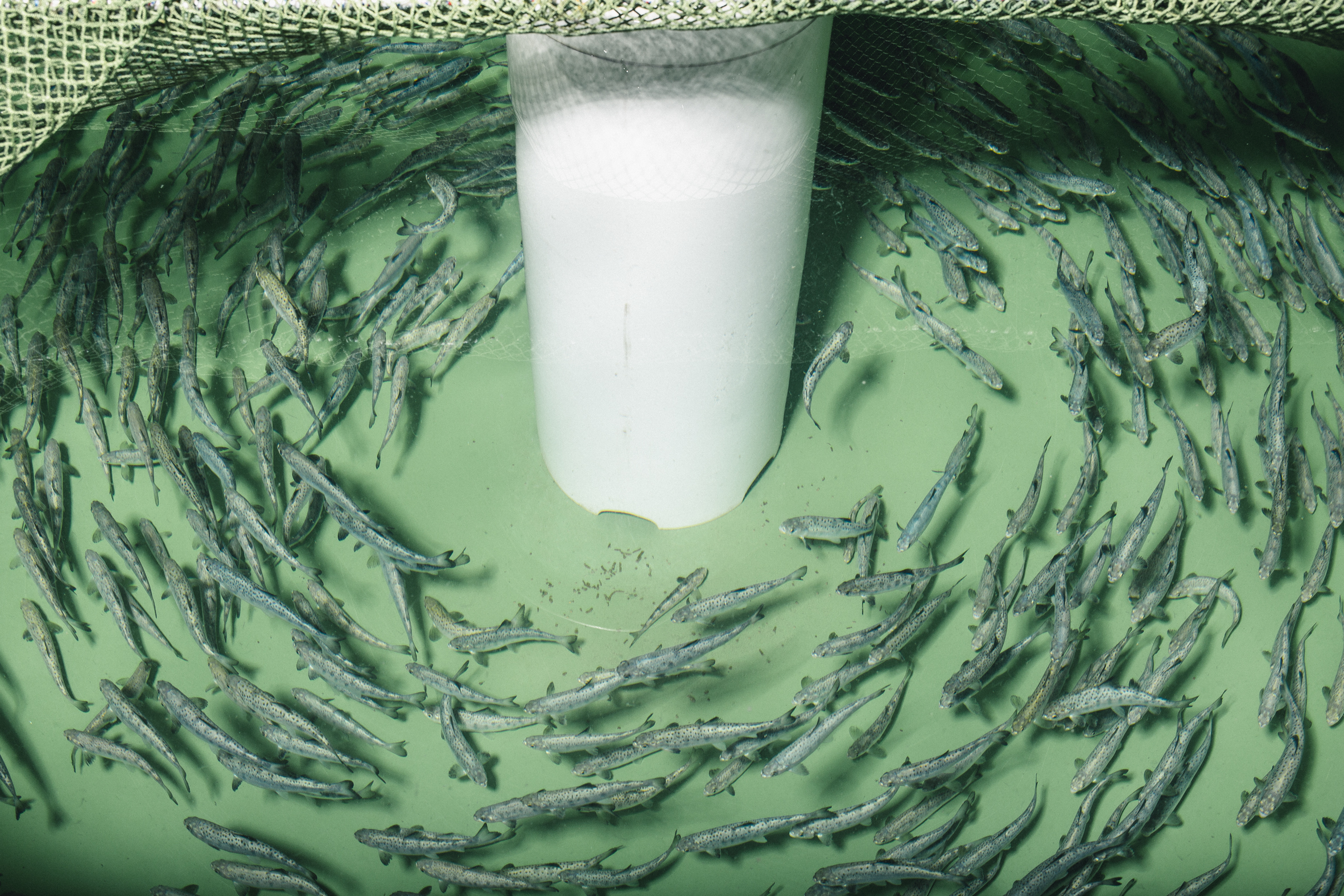FDA, USDA, and EPA all control different parts of the complicated oversight process.
On Thursday, the Department of Agriculture (USDA), the Environmental Protection Agency (EPA), and the Food and Drug Administration (FDA) announced the launch of a new joint website, meant to function as a one-stop shop for understanding complex biotechnology regulations. This category of food includes genetically modified plants and animals, as well as foods producing gene-editing technologies (or not—more on that later).
The Unified Website for Biotechnology Regulation is a gleaming, if rather simple, resource. One page outlines the Coordinated Framework for the Regulation of Biotechnology, government-speak for a system first established in 1986 that clarifies each agency’s role in regulating bio-engineered plants, animals, and microorganisms. (The same page also displays a delightfully uninformative triple Venn diagram made up of overlapping ovals that represent the USDA, the EPA, and the FDA. Each oval is labeled with the block-lettered name of an agency and nothing else.)

Helpful graphic from the government’s informative new website
The Unified Website for Biotechnology Regulation
In real life, the morass of regulations that govern biotechnology in the United States is far from simple. The FDA, for example, recently made headlines when it approved Impossible Foods’ “heme,” or plant blood, clearing the way for the company’s vegan beef substitute to be sold in supermarkets. Confusingly, the ingredient didn’t have to receive the same approval before being served in restaurants. Different rules govern foods that are prepared at home and foods that are served pre-cooked.
The EPA, for its part, regulates pesticides and chemical residues in food, and the USDA oversees biotech products that could potentially pose risks to agricultural plants and animals. Here’s where it gets really complicated: If USDA decides not to regulate something that falls under its purview, that product may not require explicit federal approval before it hits the market..
In 2016, as our columnist Pat Clinton wrote, the USDA declined to regulate the non-browning mushroom, a decision that marked a potential watershed moment. The agency was claiming that the non-browning mushroom didn’t represent a threat to other plants because it was created through the “silencing” of a gene, and that this type of modification was not cause for concern. By that logic, the agency appeared to be opening the door for anything created using gene-editing technology like CRISPR to enter the market without an explicit review from the agency. Furthermore, though the creator of the non-browning mushroom announced plans to consult the FDA, it didn’t appear he was actually required to do so. (As it stood, he was a researcher and did not plan to sell the mushrooms anyway.)
Though the labeling law technically went into effect on the first of the year, manufacturers have until 2022 to comply.
This hodgepodge regulation is not without its consequences. Take, for example, the introduction of a new generation of Roundup Ready seeds from Monsanto (since acquired by Bayer). These seeds—which are engineered to survive the application of herbicides, allowing farmers to spray weed killers on both plants and weeds—were designed to withstand two different herbicides, glyphosate and dicamba. The USDA approved the seeds before the EPA approved their matching weedkiller. Then, the company jumped the gun and began selling the seeds before the new-and-improved weedkiller was available. As a result, farmers sprayed illegal, older formulations of dicamba on their crops. The unapproved herbicides drifted from farm to farm, damaging the crops of farmers who had not planted the dicamba-tolerant seeds. One farmer murdered another over this pesticide drift, The New Republic reported in 2018.
None of this even touches on the consumer-facing side of the GMO debate. Congress passed a GMO labeling law back in 2018, and it technically went into effect on January 1 of this year. But as reporter Sam Bloch has pointed out, manufacturers are confused about what does and doesn’t need to bear the label. The law doesn’t apply to gene-edited foods like the non-browning mushroom, and it exempts products that come from animals fed with bioengineered ingredients. It also exempts some highly processed ingredients, like corn syrup. As Food Processing reported earlier this year, the USDA has not yet decided how, exactly, to apply these exemptions.
Even if we did have perfect clarity on what is and isn’t labeled under the new law, we might not notice the labels anyway. Manufacturers will be permitted to disclose bioengineered foods through the addition of a QR code on product labels, a policy that has been criticized because it places an additional barrier between consumers and transparency.
Though the labeling law technically went into effect on the first of the year, manufacturers have until 2022 to comply.
The new website won’t do much to clarify consumer confusion about GMO labeling, nor will it answer lingering questions about whether or not gene-edited foods will ever be subject to additional regulatory scrutiny. It does, however, include a “Contact Us” page.











